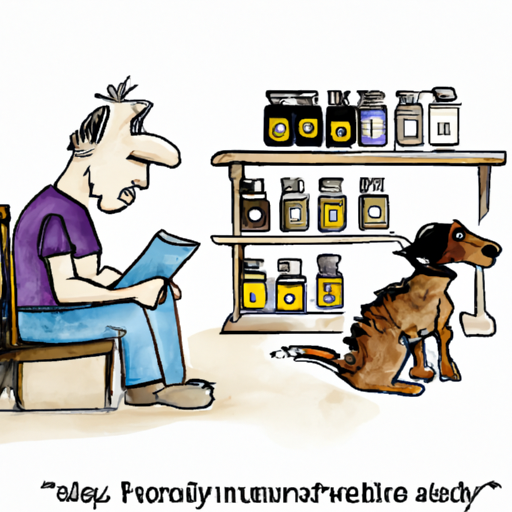When it comes to caring for our furry friends, their health is of utmost importance. Urinary Tract Infections (UTIs) are a common health issue in dogs and can cause a great deal of discomfort. This comprehensive guide aims to provide you with insights on what to give dogs with UTIs to help them recover and relieve their symptoms.
(1) Understanding UTIs in Dogs
(2) Signs and Symptoms
(3) Treatment Options
(4) Preventative Measures
(5) Frequently Asked Questions
Key Takeaways
- UTIs are common in dogs and can cause discomfort.
- Symptoms include frequent urination, blood in urine, and discomfort.
- Antibiotics are typically used for treatment.
- A balanced diet and plenty of water can help prevent UTIs.
- Always consult with a vet if you suspect a UTI.
Understanding UTIs in Dogs
Urinary tract infections occur when bacteria enter the urinary tract, which includes the kidneys, bladder, ureters, and urethra. These infections are more common in female dogs due to their shorter urethra. However, male dogs can also be affected.
According to PetMD, UTIs can be caused by a variety of factors, including hormonal imbalance, weak bladder sphincter, prostate disease, or even stress.
Signs and Symptoms
Key signs of a UTI in dogs include frequent urination, blood in the urine, discomfort while urinating, and fever. You may also notice your dog licking their urinary opening frequently. If you notice any of these symptoms, it’s crucial to consult with a vet immediately for a proper diagnosis.
Treatment Options
Upon confirmation of a UTI, the vet will typically prescribe antibiotics for your pooch. It’s vital to follow the prescription instructions to ensure the infection is fully treated.
In addition to prescribed medication, there are also some home remedies you can consider. For example, cranberry juice has been known to aid in preventing UTIs, thanks to its properties that prevent bacteria from sticking to the bladder walls. However, it’s important to consult with your vet before starting any home treatments.
For more insights on home remedies, you can check out this article on OneTopDog.
Preventative Measures
Prevention is always better than cure. Here are some ways you can help prevent UTIs in your dog:
-
Provide Fresh Water: Always ensure your dog has access to fresh, clean water. Hydration is key in preventing UTIs as it promotes regular urination which helps flush out bacteria.
-
Balanced Diet: A balanced diet is crucial in maintaining overall health, including urinary health. Foods high in protein and low in grains can help maintain a healthy urinary pH.
-
Frequent Bathroom Breaks: Regular bathroom breaks can help prevent the buildup of bacteria in the urinary tract.
-
Proper Grooming: Keeping your dog’s genital area clean can help prevent the entry of bacteria.
For more tips on preventative measures, you can visit this link on OneTopDog.
Frequently Asked Questions
1. Can a UTI clear up on its own in dogs?
No, a UTI will not clear up on its own. It requires medical attention and treatment.
2. How long does it take for a UTI to go away in dogs with treatment?
A UTI in dogs typically clears up within 10-14 days with proper treatment.
3. Can I give my dog cranberry juice for a UTI?
Cranberry juice can help in preventing UTIs. However, it should not be used as a sole treatment for UTIs. It’s best to consult with your vet before giving your dog cranberry juice.
In conclusion, UTIs in dogs are a common issue but with proper care and attention, they can be effectively treated and even prevented. Always consult with your vet if you suspect your dog is suffering from a UTI, and follow the prescribed treatment plan closely.
For more information on dog care, visit OneTopDog.



